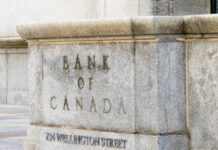Markets
Higher UK CPI readings, a solid jobs report, and hawkish shifts by Bank of England members Ramsden and Saunders. Yet sterling gains remain very modest this week. GBP/USD fails to regain the (technically minor) 1.39 resistance. EUR/GBP remains stuck in the lower half of the 0.8471/0.8731 sideways range in place since March but didn’t go for a test sub 0.85 yet. Are investors fearful for a surprise on the euro side of the story at next week’s hyped ECB meeting? Hard to tell since dovish stakes have been building after a series of Lagarde interviews. In any case, we think sterling will get momentum going into the August 5 BoE meeting which features an updated monetary policy report and could well be talking about a rate hike next year. Short-term UK money markets discount a first (15 bps) hike to 0.25% by the end of Q1 with an additional 25 bps in the cards by the end of 2022. It would put the BoE in pole position amongst G4 central banks. The UK 2-yr yield (+6.3 bps) closed at its highest level since March last year, testing 0.15% resistance. The long end of the UK curve rose as well, adding around 4 bps and resulting in a significant underperformance of UK Gilts compared to US Treasuries or German Bunds. Next week’s key things to watch for UK investors are a speech by BoE Haskel on scarring (on Monday), June UK retail sales, and July UK PMI’s (both on Friday).
The US yield curve flattened again with yields shedding up to 5 bps at the very long end of the curve. The move came amid a flurry of ignored US eco data; most of them solid with an exceptional US empire manufacturing survey. Risk aversion initially played in bonds’ favor, but US stock indices eventually closed off the intraday lows. Fed Chair Powell’s dovish message ahead of US Congress still resonated. EUR/USD at first tried to prolong Wednesday’s comeback but soon turned south again to close near 1.1810. Bunds’ relative underperformance against US Treasuries didn’t play. Even as the US 10y real yield dived deeper below -1% (-1.05%). The cycle low stands at -1.11%. US inflation expectations are rangebound around 2.3%-2.35%. The German yield curve flattened with yields shedding up to 2.5 bps. Today’s eco calendar includes June US retail sales and July University of Michigan consumer confidence. They are unlikely to leave a mark on trading. Ruling trends continue to favor US Treasuries in the counter-intuitive flattening trend while the dollar continues to stand its ground in FX space.
News headlines
Inflation in New Zealand accelerated to 3.3% in the second quarter this year. That’s up from 1.5% in Q1 and more than the 2.7% expected by markets and the RBNZ. The fastest inflation since 2011 comes days after the central bank took a hawkish turn by stopping its bond-buying program with almost immediate effects as the economy is topping estimates and more persistent inflation pressures are expected. The inflation figures may strengthen the RBNZ’s hawkish stance in upcoming meetings by pulling forward the timing of the first-rate hike from Q3 2022 currently suggested by the May forecasts. The kiwi dollar again attacks the 0.70 NZD/USD barrier.
The Bank of Japan left its policy parameters unchanged at -0.10% for the base rate and 0% for the 10y target rate. It trimmed its GDP forecast for the current fiscal year to 3.8% but boosted inflation to 0.6%. Growth is seen higher for next year at 2.7% before normalizing to 1.3% while inflation over the next years is expected to remain well below target. The BoJ has also announced a series of initiatives to help the economy turn greener. It will offer zero interest rate funds for climate-related loans or investments. For every yen lent out for climate purposes, the BoJ will also exempt two from its negative interest rate. Finally, the central bank said it would buy green bonds denominated in foreign currencies using its own FX reserves.












